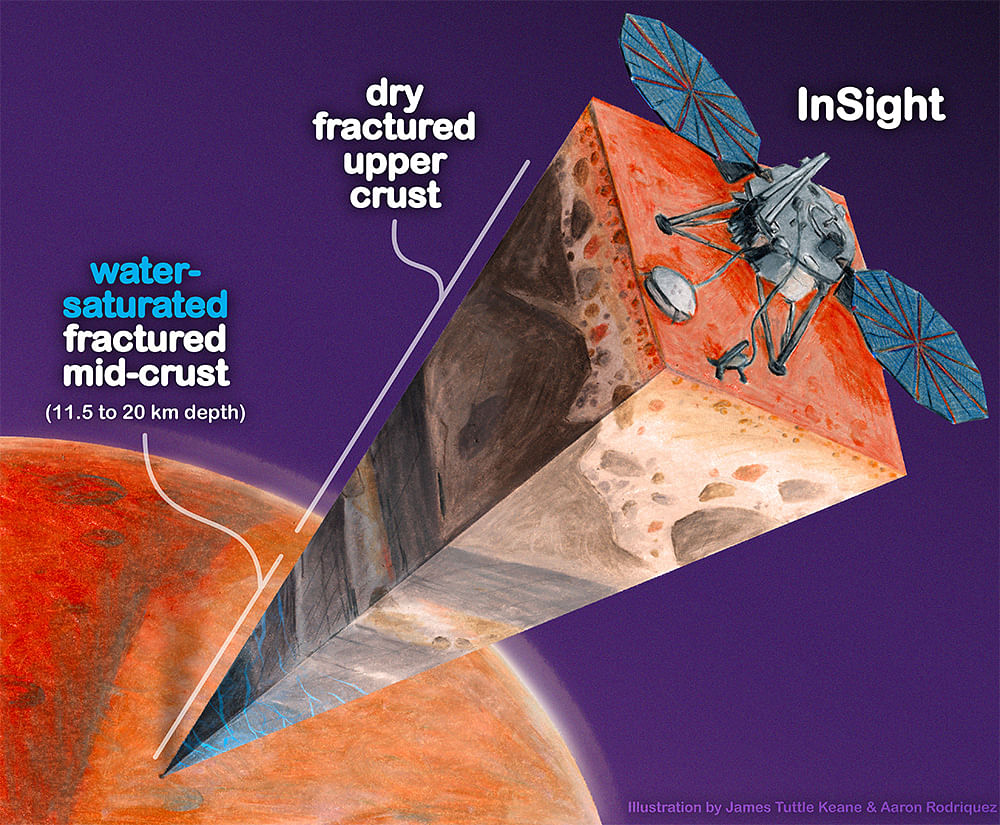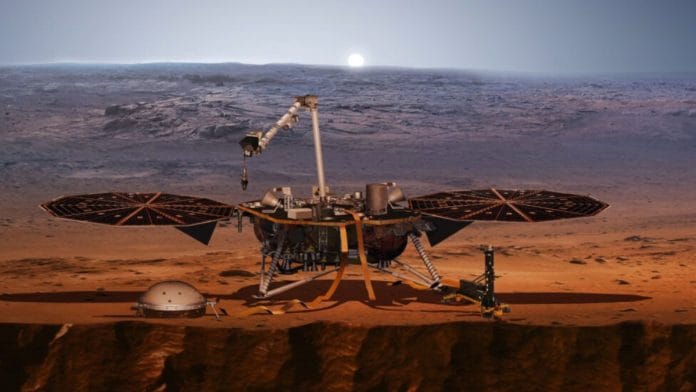New Delhi: The presence of water on Mars was confirmed 16 years ago, and the existence of oceans of water on the Red Planet was hypothesised, but evidence suggesting their presence had not been confirmed. Until now.
A team of scientists, led by Vashan Wright, an assistant professor at the University of California San Diego’s Scripps Institution of Oceanography, analysed seismic data collected from NASA’s InSight lander, and found evidence of a large reservoir of water deep under the Martian surface.
The study, published Monday in the journal Proceedings of the National Academy of Sciences (PNAS), said that this underground reservoir of water is sufficient to fill oceans spread across the entire planet, to a depth of between one and two kilometres.
This is good news for scientists who are searching for signs of life on Mars, and what better biosignature than large amounts of water on the planet?
Several rovers, landers and probes have discovered structures suggesting the existence of rivers, aquifers, channels, lake deposits and deltas on Mars. On 31 July, 2008, NASA’s Phoenix lander confirmed the presence of water ice on Mars, marking the first time water was sampled on the planet.
For the new study, the team analysed seismic data collected by InSight — sent to Mars in 2018 — with the help of mathematical models of rock physics, similar to those used on Earth, and concluded that the data indicates the presence of saturated water in a deep layer of fractured igneous rocks. Rocks formed by the cooling and solidification of hot magma are called igneous rocks.
The lander went off to sleep in December 2022, but researchers are still analysing the lander’s rich mine of data. They were able to probe the interior of Mars because InSight collected a lot of seismic data after detecting Mars quakes.
The authors on the new paper noted that if one assumes the Martian crust to be uniform throughout the planet, there is a possibility that more water is present in the mid-crust than the volumes proposed to have filled the hypothesised ancient Martian oceans.
Also read: Scientists identify Ladakh as potential analogue research site to conduct Moon, Mars mission studies
How Mars may have lost its oceans in the past
Over three billion years ago, Mars lost its atmosphere. It is hypothesised that post this, the Red Planet’s oceans disappeared. However, some water remained on the planet.
“The ancient surface water may have been incorporated in minerals, buried as ice, sequestered as liquid in deep aquifers, or lost to space,” the study said.
Scientists believe that the water that remained on Mars after the planet lost its atmosphere cannot be fully accounted for by the frozen water present in the planet’s polar ice caps. Also, the findings of the new study indicate that instead of escaping into space, much of the water percolated through the Martian soil and got stored in the crust.
So, can life thrive on Mars?
Humanity eventually wishes to settle on Mars. However, people who wish to colonise the Red Planet must not get overly excited because the water discovered is largely inaccessible for two reasons.
Firstly, the water is embedded in tiny crevices and pores of rocks in the middle of the Martian crust. Secondly, the mid-crust is between 11.5 and 20 km below the surface. Drilling at such depths is challenging on Earth, let alone Mars, where the gravity is 38 percent of that on Earth.

The lesser the gravity, the more difficult it is to dig. This implies the water embedded in rocks may not sustain astronauts who travel to Mars in future.
An August 2022 study led by Wright, and published in the journal Geophysical Research Letters, had defied scientists’ expectations about the presence of water in the upper Martian crust as InSight found that the top 300 metres beneath the planet’s surface, where the lander is located, is completely dry. This further reinforces the idea that accessing the deep reservoir of water is easier said than done.
The new finding can, however, help scientists delve deeper into the planet’s geological history, the composition and mineralogy of its crust. Understanding the Martian water cycle is important to decipher the evolution of the planet’s climate, surface and interior.






